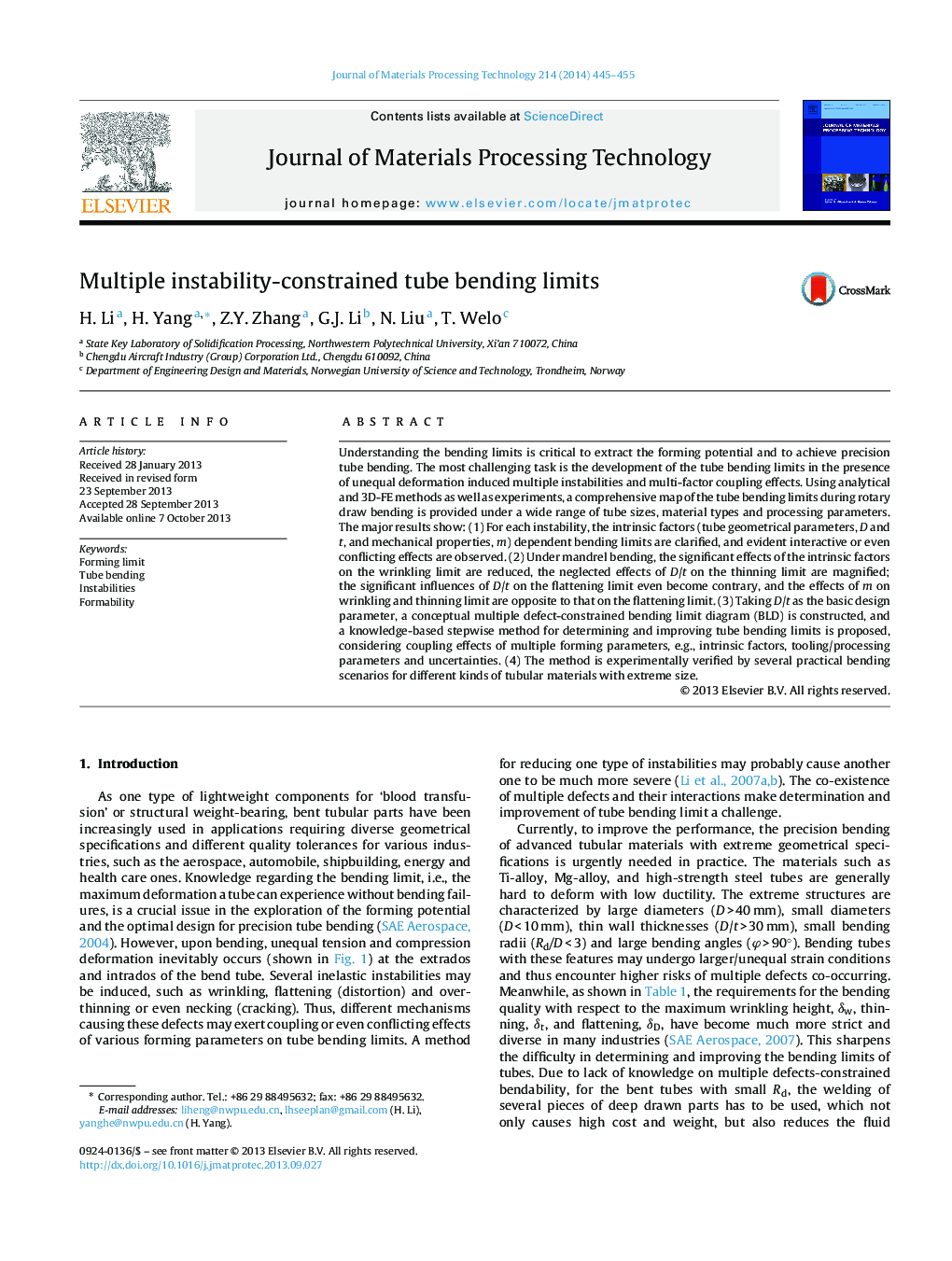| Article ID | Journal | Published Year | Pages | File Type |
|---|---|---|---|---|
| 10418726 | Journal of Materials Processing Technology | 2014 | 11 Pages |
Abstract
Understanding the bending limits is critical to extract the forming potential and to achieve precision tube bending. The most challenging task is the development of the tube bending limits in the presence of unequal deformation induced multiple instabilities and multi-factor coupling effects. Using analytical and 3D-FE methods as well as experiments, a comprehensive map of the tube bending limits during rotary draw bending is provided under a wide range of tube sizes, material types and processing parameters. The major results show: (1) For each instability, the intrinsic factors (tube geometrical parameters, D and t, and mechanical properties, m) dependent bending limits are clarified, and evident interactive or even conflicting effects are observed. (2) Under mandrel bending, the significant effects of the intrinsic factors on the wrinkling limit are reduced, the neglected effects of D/t on the thinning limit are magnified; the significant influences of D/t on the flattening limit even become contrary, and the effects of m on wrinkling and thinning limit are opposite to that on the flattening limit. (3) Taking D/t as the basic design parameter, a conceptual multiple defect-constrained bending limit diagram (BLD) is constructed, and a knowledge-based stepwise method for determining and improving tube bending limits is proposed, considering coupling effects of multiple forming parameters, e.g., intrinsic factors, tooling/processing parameters and uncertainties. (4) The method is experimentally verified by several practical bending scenarios for different kinds of tubular materials with extreme size.
Related Topics
Physical Sciences and Engineering
Engineering
Industrial and Manufacturing Engineering
Authors
H. Li, H. Yang, Z.Y. Zhang, G.J. Li, N. Liu, T. Welo,
